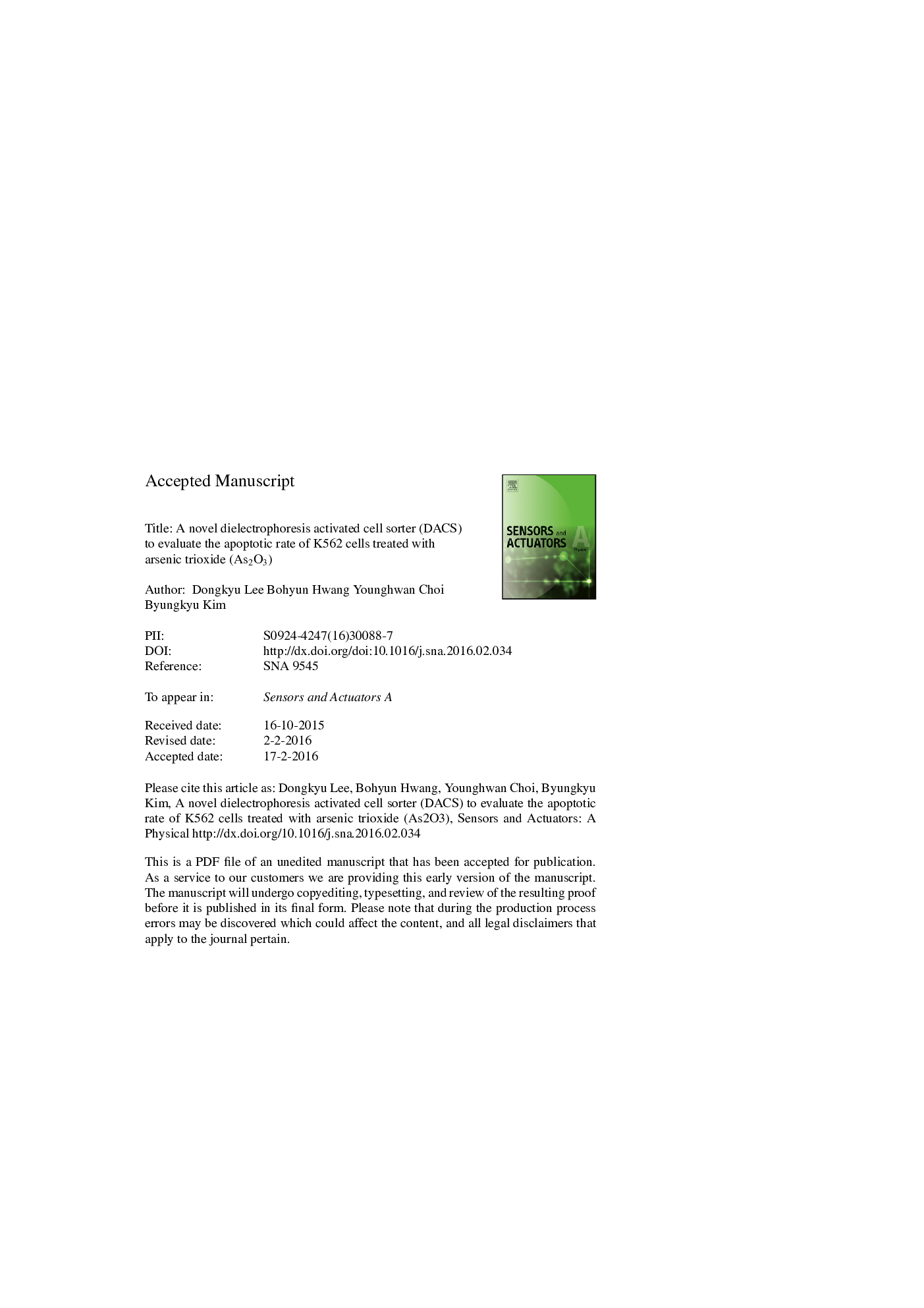| کد مقاله | کد نشریه | سال انتشار | مقاله انگلیسی | نسخه تمام متن |
|---|---|---|---|---|
| 7135027 | 1461858 | 2016 | 20 صفحه PDF | دانلود رایگان |
عنوان انگلیسی مقاله ISI
A novel dielectrophoresis activated cell sorter (DACS) to evaluate the apoptotic rate of K562 cells treated with arsenic trioxide (As2O3)
دانلود مقاله + سفارش ترجمه
دانلود مقاله ISI انگلیسی
رایگان برای ایرانیان
کلمات کلیدی
موضوعات مرتبط
مهندسی و علوم پایه
شیمی
الکتروشیمی
پیش نمایش صفحه اول مقاله

چکیده انگلیسی
Recently, arsenic trioxide (As2O3) has been highlighted for use in chemotherapy drugs, and it has been reported that it can induce the apoptosis of a leukemia cell. Until now, methyl thiazol tetrazolium (MTT) assay, DNA fragmentation assay, and morphologic examination were typically employed to investigate the apoptotic rate of leukemia cell lines after being treated with arsenic trioxide. In this paper, we propose a novel dielectrophoresis activated cell sorter (DACS) to evaluate the apoptotic rate of leukemia cells. The proposed electrode arrays based DACS consists of two transparent plates with macro width. These arrays enable the improvement of throughput and achieve the minimum number of structures to enhance the performance of the sorter with respect to factors such as cell adhesion and the leaking phenomenon. In particular, to achieve high separation efficiency, five microelectrodes are repeatedly deposited on each glass plate. In order to generate a dielectrophoretic (DEP) barrier for cell separation, the microelectrodes facing each other on the two glass plates are exactly aligned in the fabrication process. To confirm the feasibility of this cell separation concept, we analyze the forces acting on the target cell, including the DEP force, hydrodynamic drag force, and gravity. In addition, we implement a simulation study for the proposed DACS with specific channel and electrode dimensions. Prior to the separation test, we select a leukemia cell (K562 cell) as our target cell and investigate the apoptotic rate of the K562 cells treated with the arsenic trioxide according to the duration of treatment. This provides us with the efficacy of As2O3 for K562. Prior to the separation experiment for the efficacy evaluation, we first carry out a separation test with all live K562 cells and obtain a high separation efficiency of 94.74% with a low voltage of 7 Vp-p with 10Â kHz. Then, the separation efficiencies are evaluated utilizing a live/dead cell mixture according to the duration of treatment being 12 and 24Â h. Conclusively, the DACS achieves high separation efficiencies of 94.71% and 93.25% with the treated samples during 12 and 24Â h durations, respectively. Moreover the recovery rate and the throughput show competitive results of 62.5% and 17,000 cells/min.
ناشر
Database: Elsevier - ScienceDirect (ساینس دایرکت)
Journal: Sensors and Actuators A: Physical - Volume 242, 1 May 2016, Pages 1-8
Journal: Sensors and Actuators A: Physical - Volume 242, 1 May 2016, Pages 1-8
نویسندگان
Dongkyu Lee, Bohyun Hwang, Younghwan Choi, Byungkyu Kim,